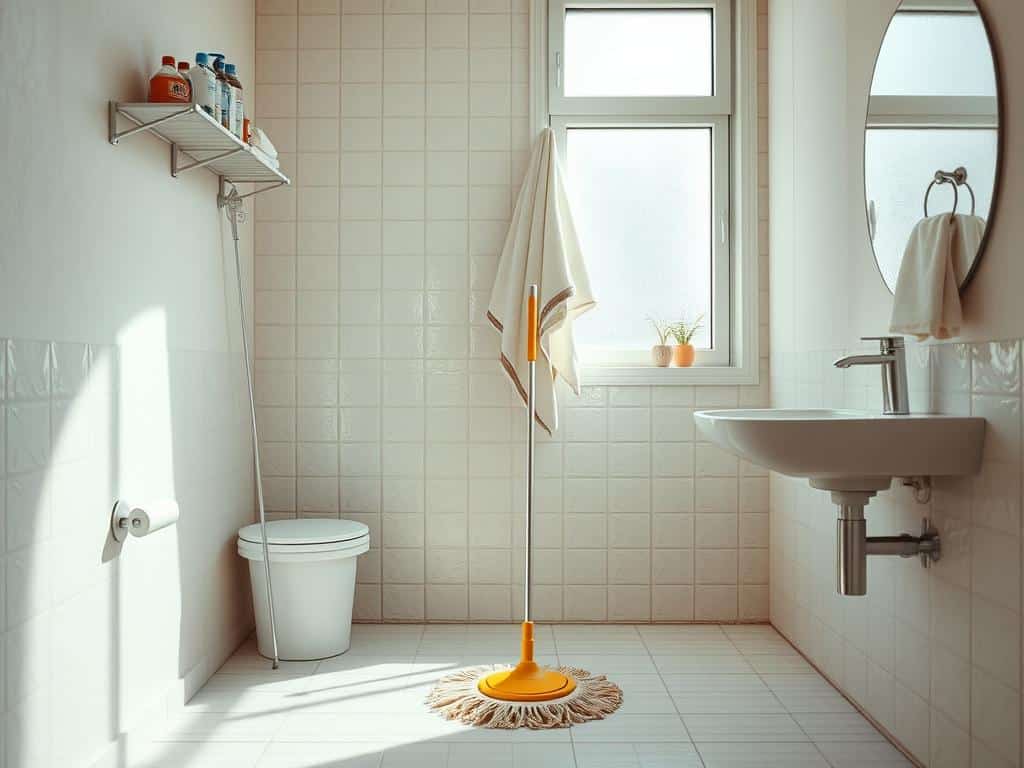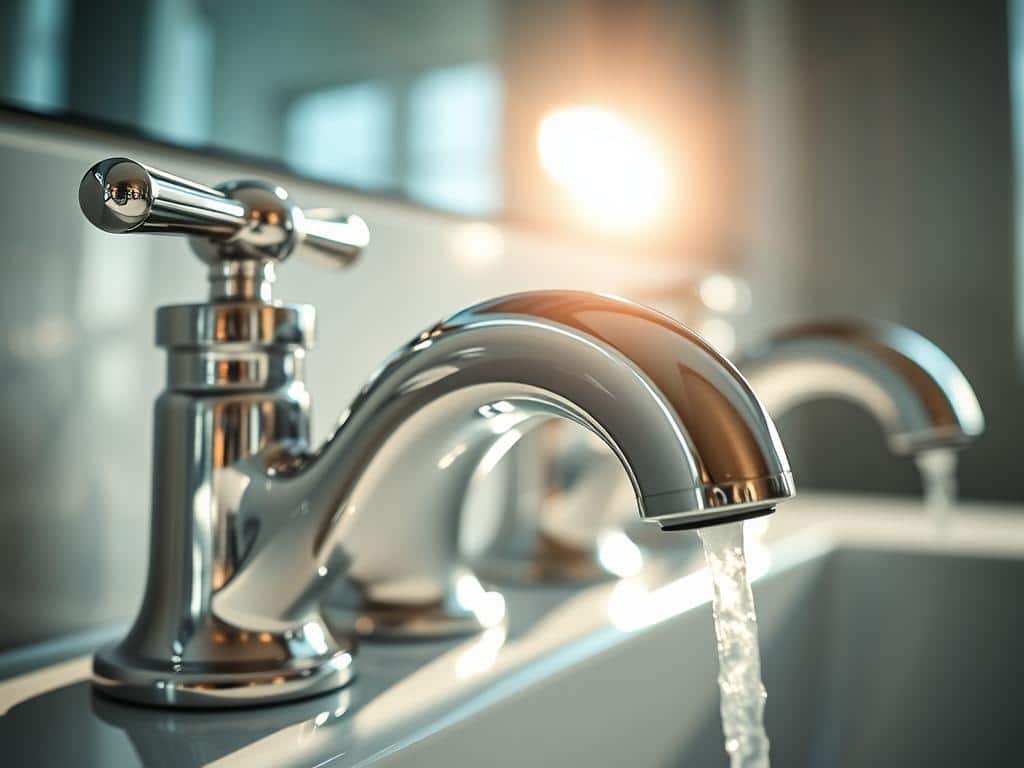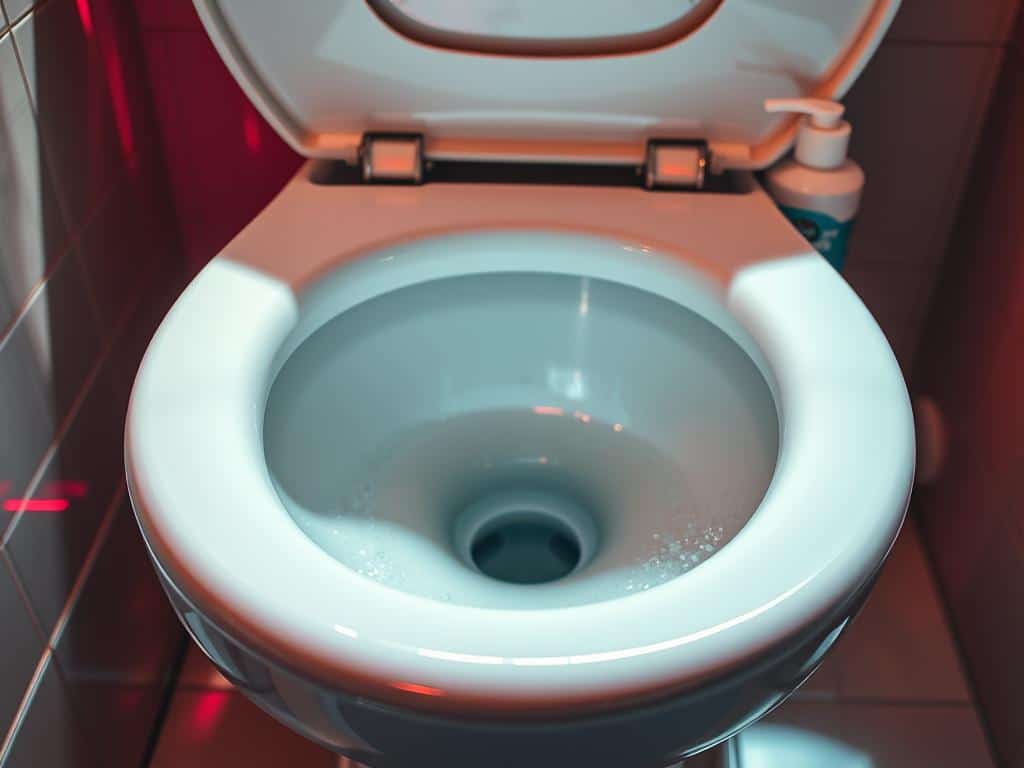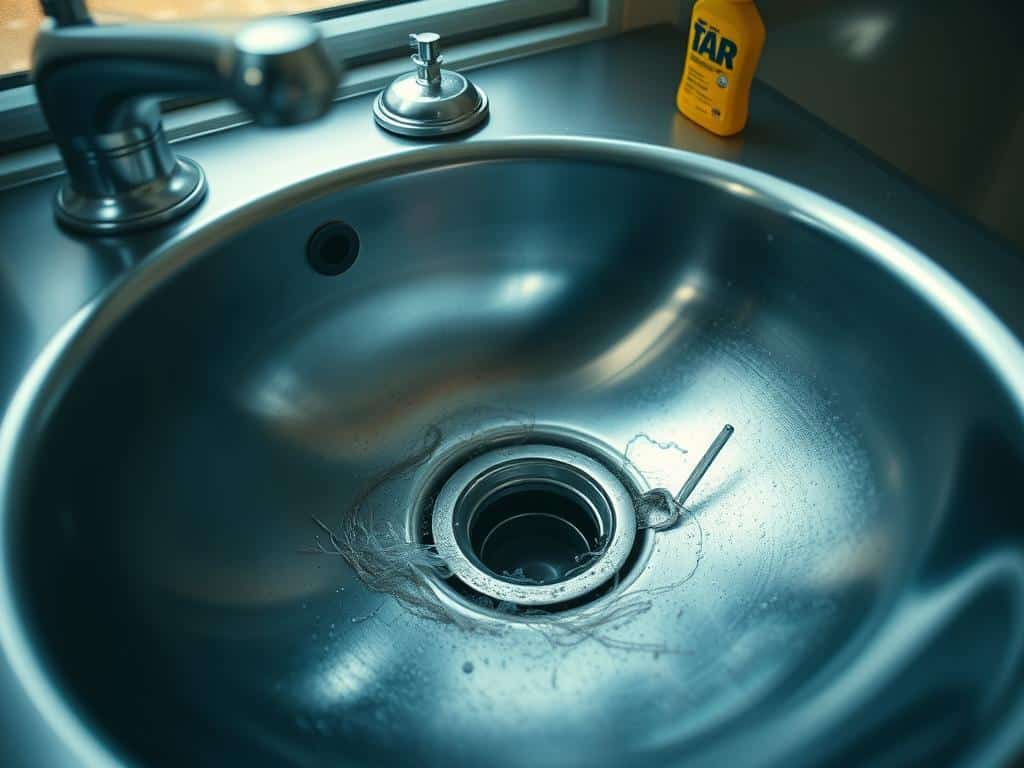
Clogged bathroom drains often come from hair, soap, and other debris. Luckily, there are easy sink solutions to fix this. In this guide, you’ll learn DIY methods to unclog your drain.
Starting with boiling water can help, especially with soap scum clogs. Pour boiling water down the drain to loosen the clog. Make sure your pipes can handle the heat to avoid damage.
If the clog sticks around, try vinegar and baking soda. This combo creates a reaction that clears blockages. It’s safe and cheap. Pour 1/3 cup of baking soda, then 1/3 cup of vinegar. Wait an hour, and flush with hot water.
Sometimes, you need tools like a plunger, drain snake, or wet-dry vacuum. Plungers work well for sinks. Drain snakes are great for deep clogs. Wet-dry vacuums create strong suction to clear blockages.
For tough clogs, professional help might be necessary. Companies like The Home Depot or plumbers like Paschal Air, Plumbing & Electric can assist. Preventing clogs is key. Don’t flush hair down the drain to avoid serious plumbing problems.
These tips let you handle bathroom plumbing yourself. Keeping your sink drain clean is doable with these methods. Whether it’s a natural remedy or a tool, managing your bathroom’s plumbing is possible.
Why Your Bathroom Drain Gets Clogged
Hair strands, soap scum, and tiny bits often block bathroom drains. When mixed with water, they form a thick mass, causing clogs as time goes on.
Actions like handwashing and teeth brushing add to sink clogs. Materials such as toothpaste and hair stick to pipe walls with soap scum. This mix slows down water flow. Products for hygiene, grease, and sometimes broken pipes or main line blockages make it worse.
The P-trap under your sink is key to avoiding deep clogs and keeping out sewer gases. Yet, without proper care, it too can become blocked. Checking and cleaning the P-trap regularly helps prevent clogs and maintains steady water flow.
Using Natural Solutions to Clear Your Drain
More and more people are choosing natural ways to fix clogged drains. They avoid chemicals like sodium hydroxide or sulfuric acid. These traditional chemicals can harm pipes over time. Thankfully, there are safer options.
Unclogging with Boiling Water
Boiling water is a simple, effective method for unclogging drains, especially for getting rid of soap buildup. However, use it with care on metal pipes. For PVC or plastic pipes, this method might not be suitable because it can cause damage. Here’s the best way to use hot water:
- Heat water until it boils vigorously.
- Slowly pour this hot water down the drain.
- If needed, do it again, but be careful of splashing water to avoid burns.
The boiling water technique works best for organic blockages. It’s great for clogs made of grease and soap.
Unclogging with Vinegar and Baking Soda
For an eco-friendly way to unclog, use baking soda and vinegar. This mix creates a reaction that helps clear clogs. To do this method, follow these steps:
- Put half a cup of baking soda in the drain.
- Add half a cup of vinegar and cover the drain quickly.
- Let it sit for at least 20 minutes so it can work on the clog.
- Afterward, rinse the drain with hot water to remove any leftovers.
This natural mix of baking soda and vinegar is great for most clogs. It’s a safer choice than harsh chemicals.
Choosing natural methods helps keep your pipes safe. It also shows a commitment to living green. By avoiding harsh chemicals, you save money on plumbing and help the planet.
Mechanical Methods to Clear a Clogged Drain
When facing a tough clogged bathroom drain, mechanical methods are often best. There are various tools made for different clogs and fixtures.
How to Use a Plunger Effectively
To clear minor clogs in sinks, tubs, and toilets, use a drain plunger. Make sure there’s an inch of water covering the drain to start. Seal it tightly and pump the plunger with steady strokes. This creates suction to loosen the blockage and open up the drain.
Employing a Drain Snake
For harder clogs, a drain snake is a great option. It can reach deep, catching or breaking apart clogs made of hair and debris. Move the drain snake slowly to avoid damaging pipes. Both manual and motorized drain snakes are effective for serious clogs.
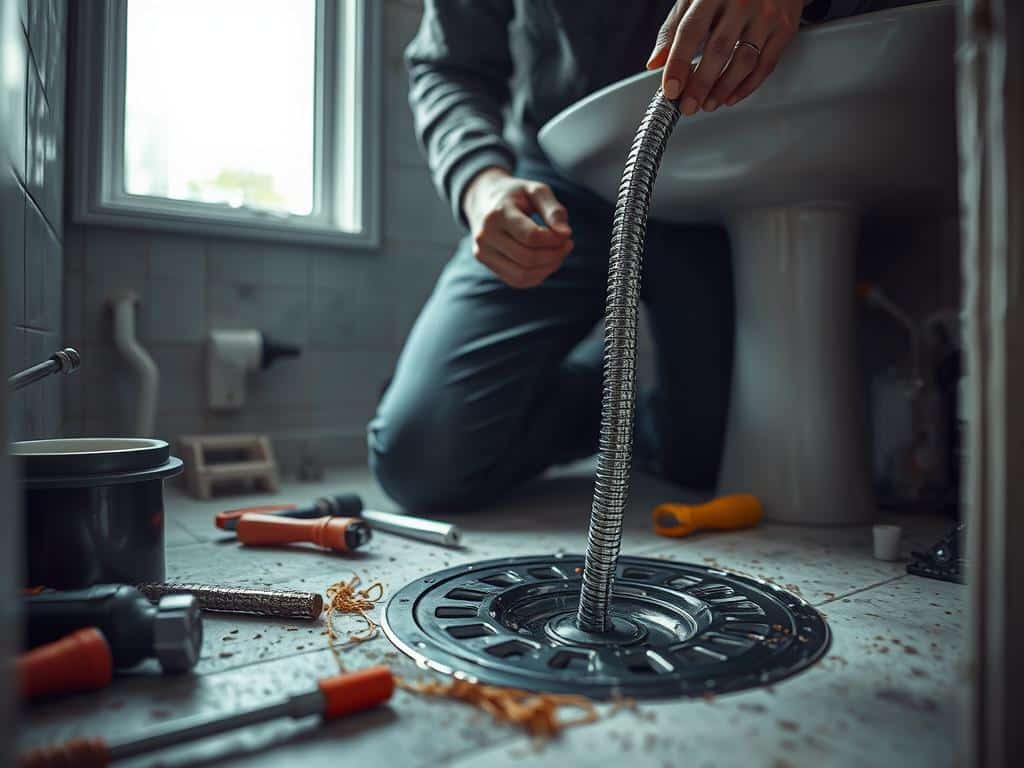
Using a Wet-Dry Vacuum
Another method is using a wet-dry vacuum. Switch it to wet mode and seal it well around the drain. Its strong suction can pull out the clog, making the drain work again. Wet-dry vacuums are a powerful choice for keeping drains clear.
Cleaning a Clogged Drain with Minimal Tools
Cleaning a clogged bathroom drain doesn’t need to be costly or handled by pros. Simple tools at home can do the job well. They are cheap and easy to use. In minutes, you can clear most blockages yourself.
Start by taking out the sink stopper to get to the drain. This is crucial for a thorough cleaning. Clogs often happen because of grime around the stopper. Use an old toothbrush and a rag to clean it. Don’t forget to put everything back correctly afterwards.
Now, take care of the P-trap under the sink. It can hold debris that blocks the drain. With a wrench, gently remove the P-trap and clean it. This quick step is a great way to unclog the sink by yourself.
Here’s a rundown of simple tools for unclogging:
| Tool | Use | Effectiveness |
|---|---|---|
| Drain Snake | Removing deep clogs | High |
| Toothbrush | Scrubbing grime | Moderate |
| Plunger | Clearing minor clogs | Moderate to High |
| Wrench | Detaching the P-trap | High |
Using these simple tools, you can keep your bathroom drain clear. No need for harsh chemicals or calling a professional. This DIY method saves money and prevents future clogs. Your sink will run smoothly.
Preventive Tips to Keep Your Bathroom Drain Clear
Keeping your bathroom drain clear is key to a clean home. Simple tips can help stop clogs before they start. Use these tips to keep your drains functioning well and your sink clear.
Avoid Flushing Hair
Hair is a big reason drains get clogged. It’s important to stop hair from blocking pipes. Use drain screens to catch hair and clean them regularly.
Don’t flush hair down the sink. Tools like a plumbing snake can help clear hair build-up. Also, avoid letting things that don’t dissolve go down the drain.
Regular Maintenance Tips
Regular sink care can prevent clogs. Start by cleaning the sink stopper often to get rid of hair and debris. Try flushing your drain with baking soda and vinegar to keep it clear.
Choose enzymatic cleaners over chemicals for regular use. They’re safer for pipes yet effective. For more on effective cleaning, check out using ultrasonic cleaners.
Keeping up with these steps means no more clogs. Plus, it can make your plumbing last longer.
Conclusion
Unclogging your bathroom sink is something many homeowners deal with. It’s usually easy to fix. Start with simple solutions like boiling water, vinegar, and baking soda. Often, these are enough to clear your drains. If not, try a plunger, drain snake, or wet-dry vacuum.
Sometimes, you might need a pro’s help for tough clogs. In Orange County, pros use methods like snaking, hydro jetting, and camera inspections. They tailor their approach to each clog. Catching problems early is important. Look out for slow drainage, bad smells, and weird noises.
To keep drains clear, regular maintenance is vital. Don’t flush hair and other hard-to-degrade items. Use drain screens. Clean often with hot water and vinegar. These steps can prevent many plumbing problems. They can help you avoid expensive repairs. For more on why cleaning drains matters, check out this link.
Using these strategies and staying on top of maintenance can save you from plumbing troubles. Knowing a bit and having the right tools can keep your bathroom drains clear and clog-free.

